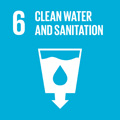- Docente: Roberto Mandrioli
- Credits: 6
- SSD: CHIM/08
- Language: English
- Teaching Mode: Traditional lectures
- Campus: Rimini
- Corso: Second cycle degree programme (LM) in Resource Economics and Sustainable Development (cod. 8839)
-
from Feb 13, 2025 to Mar 20, 2025
Learning outcomes
After a short review about the history and scope of toxicology and toxicological chemistry, the definition and concept of toxic substances, the different types of toxic responses, the factors affecting toxic responses, during the course students will be introduced to the mechanistic aspects of the main toxic substances. Furthermore, an overview of different aspects playing a role in the field of environmental toxicology will be provided. Students are expected to gain a sound knowledge and understanding of important aspects of both environmental toxicology and toxicological chemistry, including: the concepts and terminology; kinetics of chemicals in the environment; sources and types of environmental pollutants; the interaction with the different biological targets and the mechanical aspects of the toxic compounds, the basic principles governing fate and effects of toxic substances on the homeostasis of biological systems and ecosystem processes and stability; the relevance of compound, ecosystem and organism characteristics for the consequences of environmental contamination; environmental biomonitoring; environmental risk assessment.
Course contents
1) Introduction to inorganic and organic chemistry
2) Introduction to biochemistry
3) Metabolic processes
4) Oxidations
5) Introduction to toxicology
6) Metabolic reactions of xenobiotic compounds
7) Toxic elements
8) Toxic inorganic compounds
9) Solvent toxicity
10) Toxic Organic Compounds
11) Endocrine disruptor chemicals (EDCs)
12) Microplastics
13) Toxic Natural Products
14) Bioremediation
To undergo the examination, the students have to provide proof that they have attended and passed at least one of the on-line courses available on the "Learning Toxicology through Open Educational Resources" European Poject website, https://www.toxoer.com
Readings/Bibliography
S.E. Manahan
Fundamentals of Environmental and Toxicological Chemistry: Sustainable Science, Fourth Edition
CRC Press, Boca Raton, 2013
ISBN: 978-14-6655-316-3
C.D. Klaassen (Editor)
Casarett & Doull's Toxicology: The Basic Science of Poisons, Ninth Edition
McGraw-Hill Education, Columbus, 2018
ISBN: 978-12-5986-374-5
R.C. Baselt
Disposition of Toxic Drugs and Chemicals in Man, Twelfth Edition
Biomedical Publications, Seal Beach, 2020
ISBN: 978-05-7857-749-4
Teaching methods
Traditional. This course does not include laboratory training.
Assessment methods
The examination will consist in a written test (close-ended, multiple choice) aimed at assessing the student's understanding and knowledge of the topics set out during the course.
To undergo the examination, the students have to provide proof that they have attended and passed at least one of the on-line courses available on the "Learning Toxicology through Open Educational Resources" European Project website, https://www.toxoer.com
Teaching tools
PowerPoint slides are used to enhance clarity during the lessons.
Office hours
See the website of Roberto Mandrioli
SDGs




This teaching activity contributes to the achievement of the Sustainable Development Goals of the UN 2030 Agenda.
